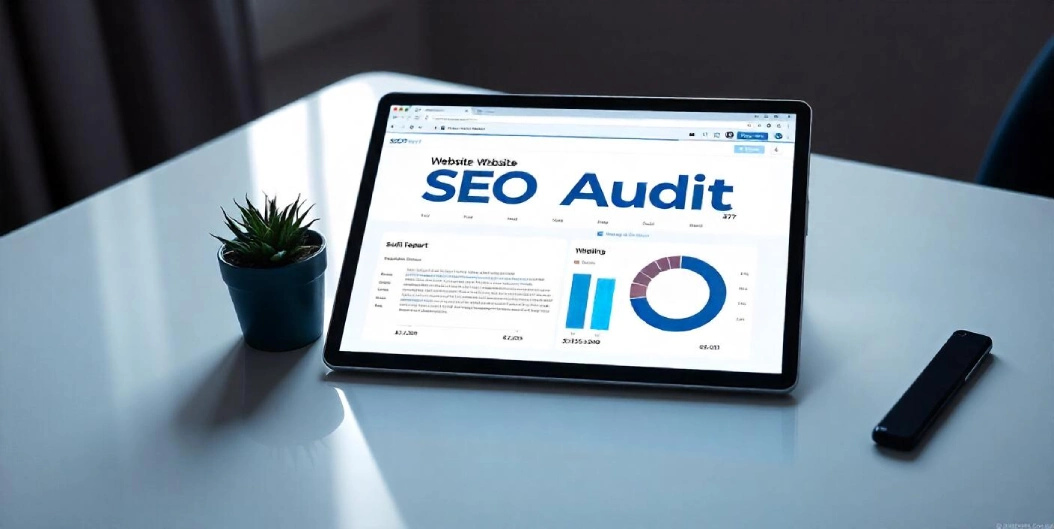
 Make Your Top Priority in SEO Unstoppable: Transform Your Goals Today!
Make Your Top Priority in SEO Unstoppable: Transform Your Goals Today!
Search Engine Optimization (SEO) is more than just a buzzword; it’s the engine that drives online success. Imagine this: A small bakery struggling to attract customers online transformed its business by optimizing its website for local SEO. Within months, their sales doubled, and they became the top search result for “best cupcakes near me.” That’s the power of an unstoppable SEO strategy.
Whether you’re running an e-commerce store, a service-based website, or a personal blog, the goal of SEO is simple: visibility, relevance, and engagement. But how do you transform these goals into an unstoppable SEO strategy? Let’s dive into the essentials to ensure your efforts lead to sustainable growth and exceptional results.
The Foundation of an Unstoppable SEO Strategy
Building a strong foundation is critical for SEO success. Start with these core elements:
1. Keyword Research: Understanding User Intent
The first step in any effective SEO strategy is understanding what your audience is searching for. Tools like Google Keyword Planner, Ahrefs, and SEMrush can help you uncover the right keywords. Focus on long-tail keywords—these specific phrases often signal higher purchase intent. For example, instead of targeting “shoes,” aim for “best running shoes for women.”
Keyword research goes beyond choosing words; it’s about understanding user behavior and predicting trends. Are you targeting keywords relevant to your audience’s needs? Have you considered seasonal keywords like “Valentine’s Day gifts” or “Black Friday deals”? Tailoring your strategy to search trends can maximize your results.
2. Content Quality: Engaging and Valuable
High-quality content is the cornerstone of effective SEO. Think about this: A fashion blog that creates a detailed guide on “10 Ways to Style Winter Coats” attracts readers and encourages sharing. Content should educate, entertain, or solve problems for your audience. Blog posts that answer user questions not only engage readers but also increase dwell time—a metric Google values highly.
Interactive elements like quizzes and polls can further captivate your audience. Imagine engaging users with a quiz like “Which SEO Strategy Is Right for Your Business?” It’s not only fun but also educational.
3. Technical SEO: The Backbone of Performance
A technically sound website ensures search engines can crawl and index your pages effectively. This includes improving site speed, fixing broken links, and ensuring your website is mobile-friendly. Use tools like Google PageSpeed Insights to identify performance bottlenecks.
Here’s a question for you: Is your site optimized for mobile users? If not, you could be missing out on over 60% of web traffic. Mobile responsiveness is non-negotiable in today’s digital landscape.
4. User Experience (UX): Enhancing Engagement
Your site’s design and usability impact how visitors interact with your content. Ensure a clean, visually appealing layout, intuitive navigation, and clear calls-to-action (CTAs). Personalization—such as recommended articles or products—can enhance the user journey.
Consider this: A well-designed site can guide users effortlessly from “search” to “purchase.” Are your CTAs clear and compelling enough to drive action?
 5. Backlink Strategy: Building Authority
5. Backlink Strategy: Building Authority
Backlinks signal trust and authority to search engines. Create shareable content like infographics, collaborate with industry influencers, and write guest posts for established blogs. Advanced strategies, like broken link building, can help you earn high-quality links efficiently.
For example, a travel website earned thousands of backlinks by creating a visually stunning infographic titled “Top 10 Hidden Gems Around the World.” What’s your plan for creating share-worthy content?
6. Local SEO: Dominating Your Area
If you run a local business, optimizing for local searches can dramatically improve visibility. Claim your Google My Business profile, encourage customer reviews, and include location-specific keywords like “best pizza in Chicago” in your content. Local SEO can make your business the top choice for nearby customers.
Step-by-Step Guide to Unstoppable SEO
Step 1: Define Clear Goals
Ask yourself: What do I want to achieve with SEO? Traffic, conversions, or brand awareness? Each goal requires a tailored approach. For traffic, focus on high-volume keywords; for conversions, emphasize commercial intent terms like “buy now.” Clear goals align your SEO strategy with your broader business objectives.
Step 2: Optimize Keywords Strategically
Once you identify target keywords, integrate them naturally into your content. Keyword stuffing is outdated and penalized. Instead, strategically place keywords in titles, meta descriptions, headers, and alt text. Use synonyms and related terms to enhance readability and relevance.
Ask yourself: Are your keywords enhancing the reader’s experience or just filling space? Optimization should always prioritize value.
Step 3: Create Evergreen Content
Evergreen content provides lasting value. Topics like “How to Improve Website Speed” remain relevant for years, driving consistent traffic. Refresh these pieces periodically by adding updated data or insights to maintain their competitive edge.
Imagine this: Your blog post on “The Ultimate Guide to SEO” keeps attracting traffic and backlinks five years after publication. That’s the power of evergreen content.
Step 4: Perfect On-Page Elements
On-page SEO focuses on individual web pages. Optimize the following:
- Title Tags: Include your primary keyword naturally.
- Meta Descriptions: Write compelling summaries to improve click-through rates.
- Headers: Use H1, H2, and H3 tags effectively.
- Alt Text: Describe images to enhance accessibility and rankings.
Have you considered using structured data to make your content more accessible to search engines? It’s a game-changer for visibility.
Step 5: Strengthen Technical SEO
Technical SEO ensures your site functions optimally. Focus on:
- Site Speed: Compress images and enable caching for faster load times.
- Mobile Optimization: Ensure your design adapts seamlessly to all devices.
- HTTPS: Secure your site with an SSL certificate for trust and rankings.
- Structured Data: Use schema markup for enhanced search visibility.
 Step 6: Build a Strong Backlink Profile
Step 6: Build a Strong Backlink Profile
Quality backlinks remain vital. Earn them by:
- Creating Valuable Resources: Develop content like guides and case studies.
- Outreach: Promote your content to industry bloggers and influencers.
- Guest Blogging: Contribute to reputable sites in your niche.
Step 7: Analyze and Adapt
SEO is dynamic. Monitor metrics like organic traffic, keyword rankings, and bounce rates using tools like Google Analytics. Regularly evaluate your performance and refine your approach to stay ahead of algorithm updates.
Common Pitfalls to Avoid
Avoid these common mistakes:
- Ignoring Mobile Optimization: Most searches occur on mobile; ensure your site is responsive.
- Skipping Updates: SEO evolves rapidly; outdated strategies can hurt your rankings.
- Over-Optimization: Excessive keyword use can lead to penalties.
- Neglecting Local SEO: For local businesses, optimizing for “near me” searches is crucial.
Advanced SEO Strategies for 2024
1. Embrace Voice Search
Voice search is growing. Optimize for conversational queries like “Where can I find the best coffee shop near me?” to capture this audience.
2. Leverage Video Content
Videos engage users and improve rankings. Create tutorials, demos, or explainer videos, and optimize them with relevant keywords.
3. Utilize Structured Data
Schema markup enhances rich snippets, improving click-through rates. For instance, use recipe schema to display cooking times directly in search results.
4. Focus on User Intent
Understand and cater to informational, navigational, and transactional queries. Providing what users need enhances satisfaction and rankings.
5. Optimize for Core Web Vitals
Core Web Vitals—a set of metrics that measure site performance—are now a ranking factor. Improve your Largest Contentful Paint (LCP), First Input Delay (FID), and Cumulative Layout Shift (CLS) to enhance both user experience and search rankings.
6. Integrate AI Tools for Optimization
Artificial intelligence tools like ChatGPT and Jasper can help you create optimized content, analyze user behavior, and predict trends. These tools save time and provide valuable insights to improve your SEO strategy further.
Conclusion: Achieving Unstoppable SEO Success
Achieving unstoppable SEO success requires a combination of solid foundational practices and innovative strategies. From optimizing technical elements to creating engaging content, every step plays a role in your overall performance. Remember, SEO is not a one-time effort but an ongoing process of analysis, adaptation, and improvement.
With the right approach, you can transform your website into a powerful tool for achieving your business goals. Whether you’re a small business or a large enterprise, the opportunities with SEO are endless. Stay consistent, stay informed, and always prioritize delivering value to your audience.
Ready to Make Your SEO Strategy Unstoppable?
At DreamBuildr.com, we specialize in creating customized SEO strategies to help businesses thrive online. Our services include:
- Comprehensive SEO Audits: Identify and fix weaknesses in your strategy.
- Content Creation: Develop high-quality, keyword-optimized content.
- Technical SEO: Ensure your website meets all performance and usability standards.
- Local SEO: Dominate your local market with targeted strategies.
Let us help you turn your SEO efforts into an unstoppable force. Visit DreamBuildr.com to get started.

FAQs
Q1: How long does it take to see SEO results?
A: Results typically take 3-6 months, but consistent efforts lead to long-term success.
Q2: Can small businesses benefit from SEO?
A: Absolutely! SEO helps level the playing field, allowing small businesses to compete with larger companies.
Q3: Why is content important for SEO?
A: High-quality content engages users, attracts backlinks, and improves rankings.
Q4: How often should I update my SEO strategy?
A: Review your strategy every 3-6 months to adapt to changes in search engine algorithms.
Q5: What are Core Web Vitals, and why do they matter?
A: Core Web Vitals are performance metrics that measure user experience, including loading speed, interactivity, and visual stability. They are crucial for rankings and user satisfaction.
Q6: Is SEO only for large businesses?
A: Not at all. SEO benefits businesses of all sizes, helping even small enterprises reach wider audiences and compete effectively.
Q7: How can AI tools support my SEO strategy?
A: AI tools can analyze data, predict trends, and create optimized content faster. They offer actionable insights to refine your SEO approach.
Ready to Make Your SEO Strategy Unstoppable?
With the right approach, you can transform your website’s performance and achieve your business goals. Start your journey today with DreamBuildr.com and unlock your website’s full potential.









